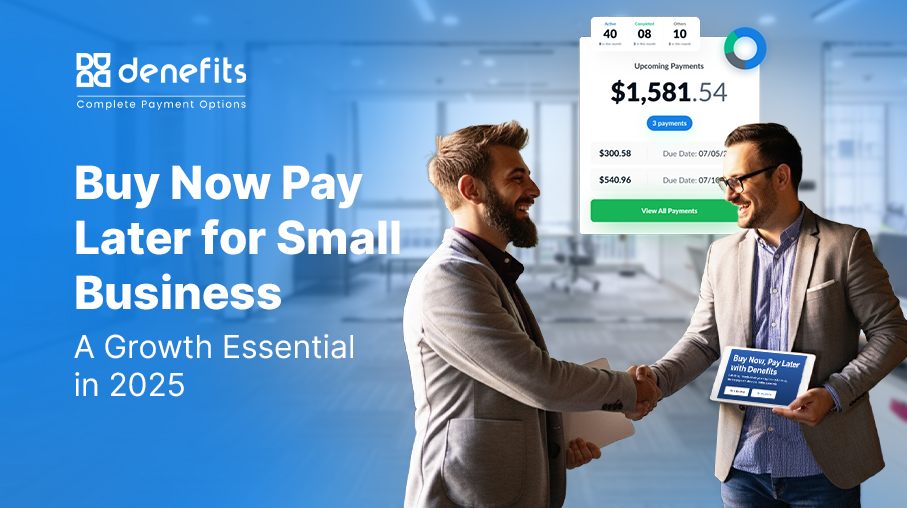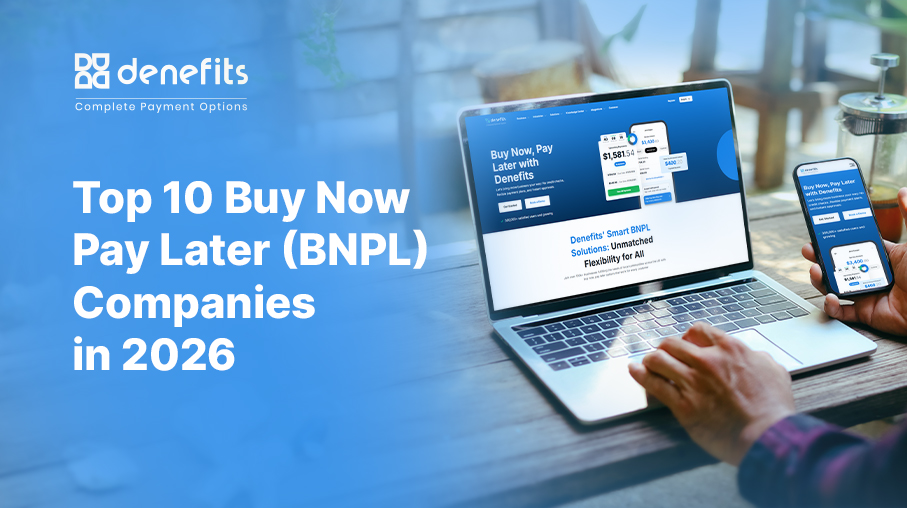
It’s 2025. Customers aren’t just shopping anymore. They’re comparing, scrolling, and choosing businesses that make life easier for them. The competition is cutthroat. The top-notch businesses? They’re not just keeping up, they’re staying ahead by adapting to customer expectations faster than the rest.
And what’s one expectation that’s quietly turned into a non-negotiable? Buy Now Pay Later (BNPL).
A couple of years ago, BNPL was a nice-to-have. It gave you an edge, made you look modern, and helped you stand out. Now? It’s table stakes. If you’re still on the fence, let’s put it bluntly: not offering BNPL could mean losing customers, sales, and loyalty to competitors who do.
Here’s a number to chew on: BNPL transactions are expected to surpass $596 billion globally in 2025 (Statista). That’s not a buzzword trend. That’s the way your customers want to pay.
So, if you’re tired of abandoned carts, last-minute drop-offs, and leaving money on the table, it’s time to take BNPL seriously.
What Is BNPL, Really?
BNPL (Buy Now Pay Later) is exactly what it sounds like. Instead of paying the full price upfront, your customers split their payments into smaller, more manageable chunks over time.
For example:
- $600 purchase → paid as $200/month over 3 months.
- $1,200 purchase → split into $100/month over a year.
The process is instant and simple:
- At checkout, the customer selects BNPL.
- They get approved in seconds.
- They take home the product or service right away.
- Payments happen automatically, without paperwork or long applications.
And for businesses, it means fewer excuses, fewer hesitations, and more sales locked in on the spot.
Two Types of BNPL for Businesses
Not all BNPL models work the same. As a business, you’ll typically see two approaches:
1. Upfront Payment (Provider Handles It)
- You get the money immediately.
- A BNPL provider steps in, pays you, and then takes care of collecting from the customer.
- Less risk, more peace of mind.
Best for: businesses that want quick, guaranteed revenue without worrying about collection.
2. Recurring Payments (You Collect Over Time)
- Instead of a lump sum, you receive payments in installments.
- This creates a steady stream of predictable, recurring revenue.
- It’s like building a mini-subscription model around your products or services.
Best for: businesses comfortable with steady cash flow and interested in long-term revenue stability.
Why Should Small Businesses Care About BNPL?
Let’s get real: BNPL isn’t just about “flexibility.” It’s about staying competitive and making sure your customer doesn’t walk away because your checkout feels rigid.
The Upsides You’ll Notice Fast
- More conversions – fewer abandoned carts, more completed checkouts.
- Higher average order value – customers spend more when payments are split.
- Broader reach – attract customers who might not have paid upfront.
- Trust factor – offering BNPL shows you’re modern, customer-focused, and accessible.
What No One Tells You (The Downsides)
- Fees – Some BNPL providers charge businesses a percentage of every transaction.
- Risk of defaults – While rare, some customers might not complete payments (unless your provider guarantees it).
- Operational complexity – If you’re running in-house BNPL, you’ll need systems to track and manage payments.
In short: BNPL is powerful, but it’s not plug-and-play. You need to pick the right model and partner to avoid headaches.
Real-Life BNPL in Action
- Retail: A boutique sells $300 jackets. Customers split into 3x $100. Sales jump 30% because hesitation disappears.
- Services: A dental clinic offers $1,200 treatment plans. Customers pay $100/month. Patients commit faster, clinic builds recurring revenue.
Wellness: A local gym charges $900/year. Customers split into $75/month. Membership sign-ups soar.
BNPL turns “I’ll think about it” into “I’ll take it.”
BNPL Checklist for Businesses
Want to know if BNPL is the right fit for your small business? Here’s a quick litmus test.
✔️ Do my customers hesitate because of upfront costs?
✔️ Would splitting payments remove friction at checkout?
✔️ Can I absorb provider fees without hurting margins?
✔️ Am I comfortable managing recurring payments (if I choose in-house BNPL)?
✔️ Do I want to boost conversions and increase order values?
✔️ Would offering BNPL give me an edge over competitors in my industry?
✔️ Am I ready to promote BNPL as part of my sales strategy, not just a quiet option at checkout?
If you’re checking off more than half these boxes, BNPL isn’t just a good idea. It’s a growth move.
How to Get Started with BNPL
1. Research providers – Compare BNPL partners that fit your industry. Look at fees, flexibility, and customer approval processes.
2. Decide your model – Do you want upfront payouts (low risk) or recurring revenue (steady cash flow)?
3. Customize plans – Offer timelines that make sense (3, 6, 9, 12 months). The easier it feels, the more likely customers say yes.
4. Integrate it seamlessly – Make sure BNPL shows up as a visible option on your website, invoices, or POS.
5. Automate payments – Don’t add manual work. Use systems that handle approvals, contracts, and collections.
6. Promote it everywhere – Put “Buy Now Pay Later” front and center in your marketing. Customers won’t use it if they don’t know it’s available.
Denefits: BNPL Made Simple for Small Businesses
Now let’s talk about one provider that’s helping 100,000+ small businesses across the U.S. grow with BNPL: Denefits.
Denefits goes beyond just offering payment splits. It builds an entire system around making BNPL work for you and your customers.
Here’s what makes Denefits stand out:
- Flexible Payment Plans – Choose from No-Fee, In-House, and EZ Financing (with deferred interest). Tailor them to your business.
- No Credit Barriers – Perfect for customers with limited or no credit history. You don’t lose out on a sale.
- Automated System – Create and track plans, manage contracts, and collect payments without lifting a finger.
- Timely Payments – Even if your customer delays, Denefits ensures you get paid on time.
- Website Integration – Let customers pre-qualify and set up plans right on your site.
- Multilingual Support – Cater to customers in their preferred language, making accessibility a no-brainer.
Example: A dental clinic offering $1,200 treatments could split payments into $100/month for 12 months. Customers say yes more often, the clinic secures recurring revenue, and Denefits handles the heavy lifting.
For small businesses, this isn’t just a payment solution. It’s a conversion and loyalty engine.
Final Word: BNPL Is No Longer Optional
BNPL has moved from “cool perk” to “minimum expectation.” Customers want flexibility. Businesses that provide it will win the sale. Businesses that don’t? They risk being left behind.
If you’re serious about growth, loyalty, and keeping your checkout friction-free, Buy Now Pay Later for small business isn’t just an option. It’s a necessity.
And with platforms like Denefits, you don’t have to figure it out alone — you can roll out BNPL seamlessly and start seeing results immediately.
So the real question is: Are you ready to turn hesitation into sales?
FAQs: Buy Now Pay Later for Small Business
Q1. What is Buy Now Pay Later for small businesses?
It’s giving your customers the freedom to split payments instead of paying upfront. For you, it means fewer lost sales and more completed checkouts.
Q2. How does Buy Now Pay Later for merchants work?
At checkout, the customer picks BNPL, gets approved in seconds, and you get paid. Either in full right away (through the provider) or in steady installments.
Q3. What are the real benefits of Buy Now Pay Later for business?
More conversions. Higher order values. A wider pool of customers. You remove the price hesitation and close more sales.
Q4. What’s the catch with BNPL for business?
Fees from providers and, if you run it yourself, the hassle of chasing late payments. But with the right setup, the upside far outweighs the downside.
Q5. How do I start offering payment plans for small business customers?
Pick a BNPL partner, set flexible timelines (3, 6, 9, 12 months), automate everything, and actually promote it. If customers don’t see it, they won’t use it.



